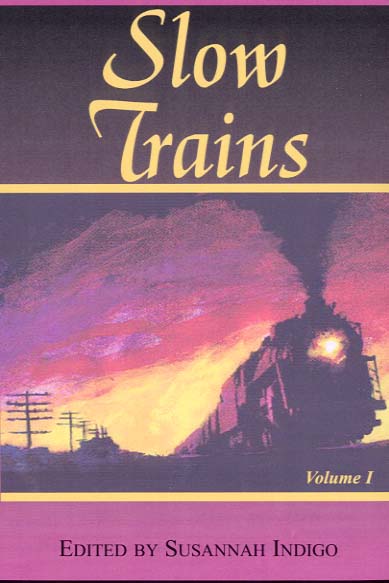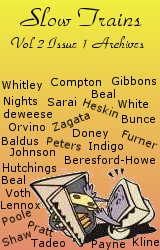
Dred Scott
by Brian Peters
The "Old Courthouse" sits near the riverfront in St. Louis. The National Park Service maintains it now -- the Missouri courts having moved to better quarters some years ago. It was a very new courthouse in 1846 -- in fact an unfinished building -- when Dred Scott and his wife Harriet began their journey to freedom there.
I hesitate to even write about slavery. Creating a caste of permanent immigrants deprived of freedom and exploited for purely economic reasons is the single greatest source of shame in American history, and I cannot find anything about the institution that is less than evil. But failing to think and write about institutional evil only prolongs its hold on the imagination -- and that hold remains all too powerful, even a century and a half later. Besides that, the life of Dred Scott contains elements of great hope in the midst of great evil, and those are things worth telling.
Dred and Harriet Scott began their quest for freedom in April of 1846. Their case was straightforward -- they each stated, originally in separate lawsuits, that they had been taken by their owner, John Emerson, into states and territories where slavery was prohibited, and had lived there for some years. Under prior decisions of the Missouri Supreme Court, a master who took a slave to live in a free state or territory lost ownership of the slave.
This is my first point of hope -- the fact that the case happened at all. Dred and Harriet Scott were not literate, and each verified their petitions by making a mark, authenticated by a notary public. However brightly the desire for freedom burned in them, the Scotts could not have brought the cases without the considerable support of well-wishers, and of the lawyers representing them, most likely without charge.
The Scotts' petitions were strongly resisted by John Emerson's widow, Irene, and those who represented her. Possibly, the strong opposition was founded in part on concerns about the financial security of Irene and her three year old daughter. Possibly her advisors considered it a matter of principle -- it's hard to say at this distance. Certainly, they succeeded in preventing the case from being truly heard on its merits until January 12, 1850, when a Missouri jury returned a verdict in each of the Scotts' cases affirming that they were free persons.
There lies my second point of hope -- that a judge and jury in a state where slavery was lawful, and increasingly under siege, properly returned a verdict freeing the Scotts.

From this time forward, in the court system at least, the Scotts were victims of political bad timing. When Irene Emerson's appeal of the verdict to the Missouri Supreme Court was decided in March, 1852, the court had become an elected body, and ardent pro-slavery Democrat William Scott delivered the two-to-one decision of the court, reversing decades of court precedent to declare that the Scotts remained slaves.
The case does not end there, of course, or it would surely have gone mostly unnoticed. Instead, John F. A. Sanford, Irene Emerson's brother and then a resident of New York, was substituted as owner of the Scotts and their children, and the Scott's new lawyers brought suit in federal district court on the basis of diversity of citizenship. It is not entirely clear whether John Sanford's ownership was a genuine transfer, or whether it was a convenient way of removing Irene Emerson's name from the case after her remarriage to an abolitionist politician. Regardless, the case goes forward with Sanford as defendant.
Not surprisingly, the federal jury -- required to follow Missouri law, however recently changed -- ruled in favor of Sanford, and the case was appealed to the U.S. Supreme Court. There, on March 6, 1857, Chief Justice Roger B. Taney used the case as an opportunity to make the broadest possible political statement about slavery, ruling that blacks were not citizens, and therefore not entitled to sue in federal courts, and ruling that neither Congress nor the free states were allowed to interfere with the Constitutional property rights of slaveowners in their slaves.
Here lies my third point of hope, because Scott v. Sandford (John Sanford's name is mispelled in the decision) resulted in howls of protest from Republicans and Abolitionists, not fully stilled until the case was effectively overruled by civil war and Constitutional amendments abolishing slavery.
But I have a last point of hope, more significant to me than all the rest. Dred and Harriet Scott and their two daughters became free persons, shortly after the Supreme Court decision in their case. Irene Emerson and her husband Calvin Chaffee (John Sanford having died) quickly transferred ownership of the Scotts to Taylor Blow, who promptly manumitted (freed) them and served as surety for the bonds required to be posted for their freedom.
Taylor Blow was the son of Peter Blow -- the original owner of Dred Scott -- and Taylor may have grown up considering Dred Scott a part of his extended family. The Blow family sold Dred Scott to John Emerson around the time of Peter Blow's death, probably to pay creditors of Peter Blow. And that, you might think, would be the end of the matter, but it was not. Not only Taylor Blow, but many other members of the Blow family were clearly benefactors of Dred and Harriet Scott throughout their court case, and after the Scotts were free persons. Their support was not from newly discovered opposition to slavery -- Taylor Blow supported the Confederate side in the Civil War. Instead it appears to be a statement about the character, and friendship, of Taylor Blow and Dred Scott. Theirs appears to have been a mutual respect, or at least a mutual sense of honor, that transcended the institution of slavery. And in that I find great hope.
Images of many of the original documents from the Missouri state court cases of Dred and Harriet Scott are available at the Dred Scott section of the Washington University Library site. The order of the U.S. Supreme Court remanding the case for dismissal by the federal district court is also online at the National Archives and Records Administration site. Probably the best historical reference about the case is Don E. Fehrenbacher's Slavery, Law, & Politics. The unabridged original volume, The Dred Scott Case (winner of the 1979 Pulitzer Prize in History) is also still available.
©2002 by Brian Peters


 Slow Trains, Volume 1 in print
Slow Trains, Volume 1 in print




